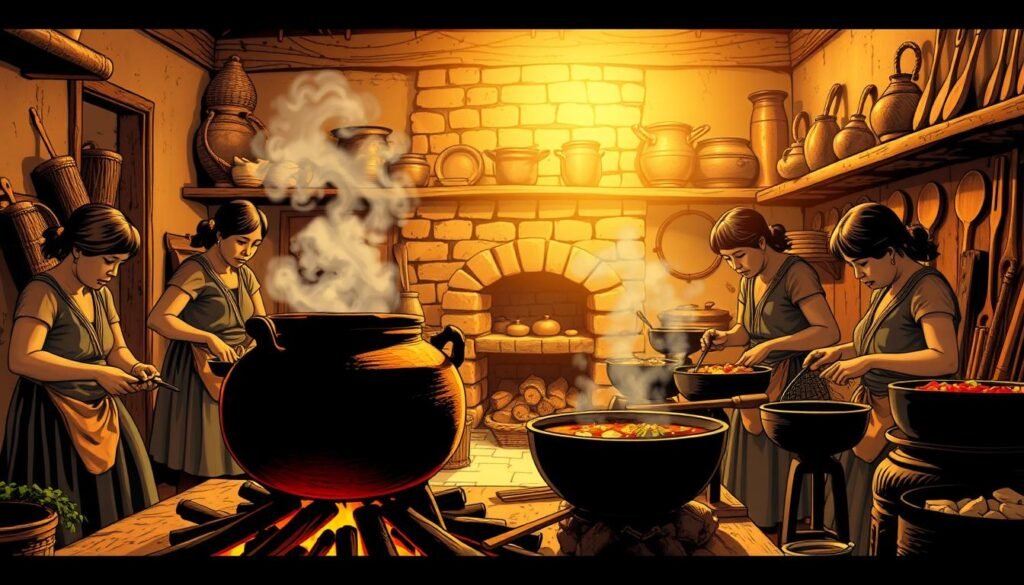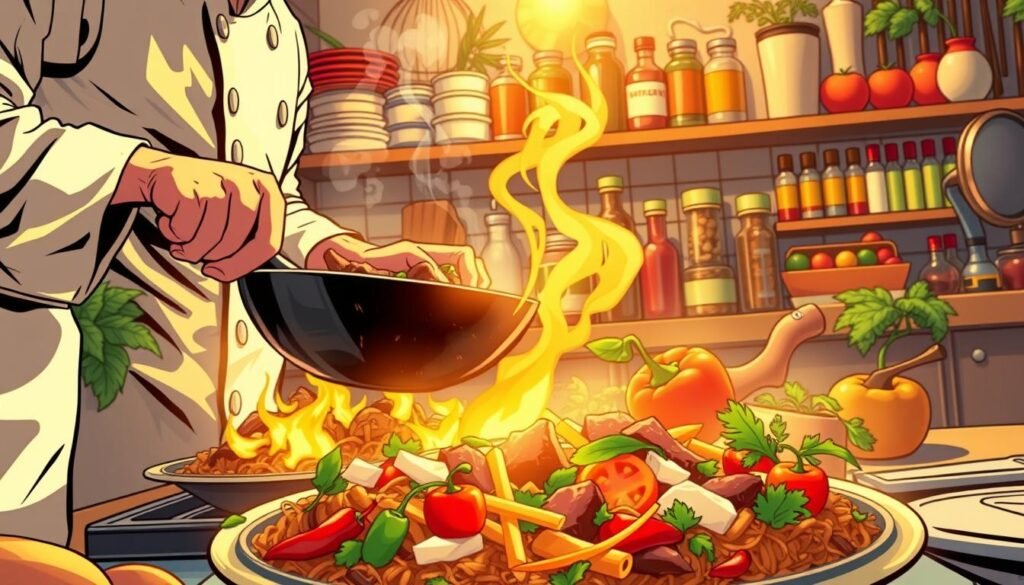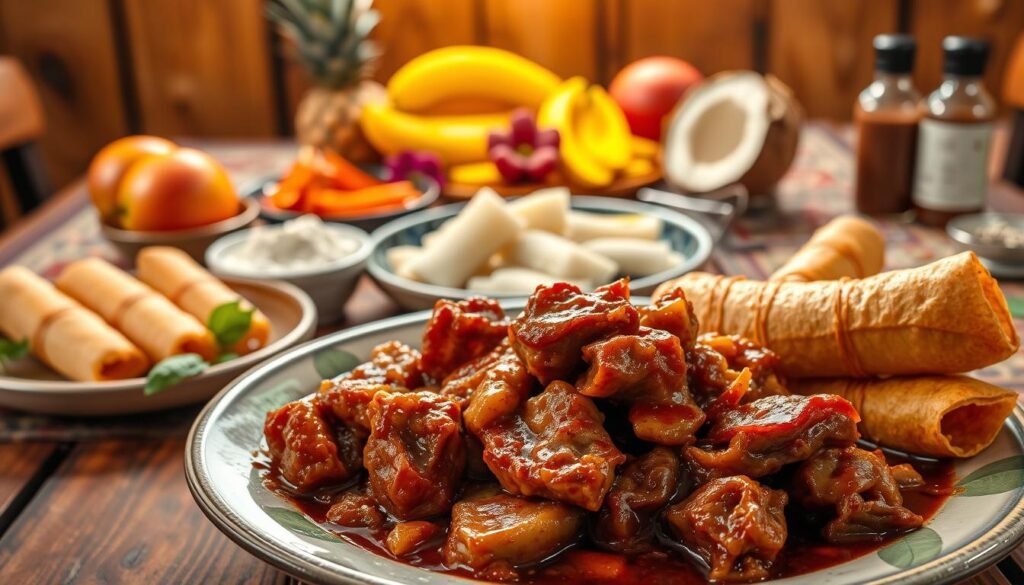Filipino cooking has a rich history shaped by diverse influences. From early indigenous methods to modern practices, the kitchen has always been a place of creativity and innovation. The American colonial period brought significant changes, introducing new tools and techniques that transformed how Filipinos prepare food.
Before American influence, Filipino cooking relied on traditional methods like open-fire grilling and clay pot simmering. These techniques were deeply rooted in local culture and passed down through generations. However, the arrival of American teachers and institutions introduced modern appliances and professional training, reshaping the art of cooking in the Philippines.
American missionaries and educators played a key role in this transformation. They brought knowledge from institutions like the Boston Cooking School, emphasizing hygiene, nutrition, and presentation. This blend of indigenous skill and foreign influence created a dynamic culinary landscape that continues to evolve today.
Key Takeaways
- Filipino cooking evolved from traditional methods to modern techniques under American influence.
- American educators introduced new tools and professional training in the Philippines.
- The blend of indigenous and foreign practices created a unique culinary identity.
- Modern Filipino kitchens reflect a mix of traditional and American-inspired methods.
- Professional culinary training in the Philippines was shaped by American educational models.
Historical Overview of Culinary Arts in the Philippines
The roots of Filipino cooking stretch back centuries, shaped by indigenous practices and foreign influences. From the use of fire to the creation of clay pots, early Filipinos developed unique methods to prepare their meals. These traditions laid the foundation for a rich culinary heritage that continues to thrive today.
Early Culinary Traditions and Indigenous Influences
Before foreign influences, Filipino cooking was deeply connected to nature. Indigenous communities relied on local ingredients like rice, fish, and root crops. Techniques such as open-fire grilling and clay pot simmering were common. These methods were not just about sustenance but also about preserving cultural identity.
One notable example is the Banaue Rice Terraces, created over 2,000 years ago by the Ifugao people. This agricultural marvel highlights the ingenuity of early Filipinos in cultivating rice, a staple in their diet. Traditional meals often included dishes like sinigang (sour soup) and adobo (braised meat), which remain popular today.

The Impact of Colonial Eras on Food Techniques
The arrival of Spanish colonizers in the 16th century brought significant changes. Ingredients like tomatoes, garlic, and olive oil were introduced, enriching Filipino recipes. The Manila Galleon Trade further expanded the culinary landscape, bringing spices and crops from across the world.
During the American colonial period, modern appliances and professional training were introduced. American educators emphasized hygiene, nutrition, and presentation, transforming cooking into an art. This blend of indigenous and foreign practices created a dynamic culinary identity that continues to evolve.
| Period | Key Influences | Impact on Filipino Cooking |
|---|---|---|
| Pre-Colonial | Indigenous methods, local ingredients | Foundation of traditional recipes |
| Spanish Era | Introduction of new ingredients | Enrichment of flavors and techniques |
| American Era | Modern tools and training | Professionalization of cooking |
Today, Filipino cuisine reflects this rich history, blending indigenous skill with global influences. From traditional dishes to modern interpretations, the culinary journey of the Philippines is a testament to its vibrant culture.
Culinary Techniques and Their American Influences
The American influence on Filipino kitchens brought a wave of innovation and modernization. This period introduced new methods that blended seamlessly with traditional practices, creating a unique fusion. The result was a dynamic evolution in how Filipinos approached cooking and food preparation.

Adoption of Western Cooking Methods in Filipino Kitchens
American educators introduced Western techniques that emphasized precision and efficiency. These methods were quickly adopted in Filipino kitchens, blending with local practices. For example, baking and broiling became popular alongside traditional grilling and simmering.
Professional training programs, inspired by institutions like the Boston Cooking School, played a key role. They taught Filipinos the importance of hygiene, nutrition, and presentation. This shift transformed cooking from a daily chore into an art form.
Evolution of Kitchen Tools and Presentation Styles
The introduction of modern appliances revolutionized Filipino kitchens. Traditional clay pots and open fires were replaced by ovens, stoves, and electric mixers. These tools made cooking faster and more efficient.
Presentation styles also evolved. American influence brought a focus on aesthetics, encouraging Filipinos to plate their dishes creatively. This blend of functionality and artistic appeal became a hallmark of modern Filipino cooking.
| Traditional Tools | Modern Tools | Impact |
|---|---|---|
| Clay pots | Ovens | Improved efficiency |
| Open fires | Stoves | Enhanced safety |
| Manual grinders | Electric mixers | Increased precision |
Today, Filipino kitchens reflect this rich blend of tradition and innovation. The integration of American techniques has created a culinary landscape that is both unique and globally inspired.
Culinary Art and Cultural Fusion
The fusion of Filipino and American culinary practices has reshaped the way food is prepared and enjoyed in the Philippines. This cultural exchange has led to a dynamic blend of flavors and techniques, creating a unique identity for modern Filipino cuisine. From traditional recipes to innovative dishes, the kitchen has become a space where creativity thrives.

Blending Filipino and American Flavors
Filipino and American culinary traditions have merged in exciting ways. Dishes like adobo with a twist of barbecue sauce or sinigang infused with American herbs showcase this fusion. These recipes highlight the skill of blending indigenous ingredients with modern techniques.
American influence has also elevated the presentation of Filipino dishes. Chefs now focus on plating food as an art form, combining vibrant colors and textures. This approach has made Filipino cuisine more appealing to a global audience.
Transformation in Cooking Schools and Mentorship Initiatives
Cooking schools in the Philippines have embraced American educational models. Institutions like the Boston Cooking School inspired local programs to emphasize hygiene, nutrition, and creativity. This shift has professionalized the cooking industry, nurturing a new generation of skilled chefs.
Mentorship initiatives have played a crucial role in this transformation. Experienced chefs guide young talents, helping them master both traditional and modern techniques. This cross-cultural environment fosters innovation and ensures the sustainability of Filipino culinary traditions.
| Aspect | Filipino Tradition | American Influence |
|---|---|---|
| Ingredients | Local produce, fish, rice | Herbs, sauces, baking staples |
| Techniques | Grilling, simmering | Baking, broiling |
| Presentation | Simple, functional | Artistic, visually appealing |
The integration of diverse techniques has not only improved technical skill but also enhanced creative expression. This fusion reflects broader cultural trends, making Filipino cuisine a vibrant part of the global world of food.
For more insights on the rise of fusion cuisine, explore this detailed article.
Conclusion
Modern Filipino kitchens showcase a seamless mix of tradition and innovation. The American influence introduced new tools and techniques, blending them with indigenous practices. This fusion has reshaped how Filipinos approach food preparation and presentation.
Culinary education played a key role in this transformation. Programs inspired by American models emphasized hygiene, nutrition, and creativity. Mentorship initiatives further bridged the gap between traditional and modern cooking methods.
Today, Filipino cuisine reflects this dynamic blend. From traditional dishes to modern interpretations, the art of cooking continues to evolve. This journey highlights the adaptability and creativity of Filipino skill in the kitchen.
Explore more about the rich history and modern practices of Filipino cuisine by diving into this detailed guide. The blend of cultures and techniques ensures a vibrant future for Filipino culinary traditions.
FAQ
How did American influence shape Filipino cooking methods?
American influence introduced Western cooking techniques like baking and grilling, which blended with traditional Filipino practices, creating a unique fusion in the kitchen.
What role did colonial eras play in Philippine food history?
Colonial eras, including Spanish and American rule, brought new ingredients, tools, and methods that significantly transformed Filipino food culture over time.
How did kitchen tools evolve during this period?
The introduction of modern kitchen tools like ovens and mixers replaced traditional methods, making cooking more efficient and expanding the range of dishes prepared.
What is the significance of blending Filipino and American flavors?
This blend created a distinct culinary identity, combining the richness of Filipino traditions with the simplicity and innovation of American cuisine.
How did cooking schools contribute to this evolution?
Cooking schools and mentorship programs played a key role in teaching new techniques and fostering creativity, helping chefs master both Filipino and American styles.
Source Links
- American Influence On Filipino Food – Episode Transcript — Exploring Filipino Kitchens
- Filipino-American cuisine
- Filipino Cuisine: A Rich Tapestry Of Culinary Traditions
- Filipino cuisine
- Filipino Cuisine: A Culinary Journey Through the Philippines
- Culinary History: Techniques & Culture
- American cuisine
- Mixing Culinary Traditions: Unveiling the Art of Blending Different Food Cultures
- What Is Fusion Cuisine? – Escoffier
- What is Culinary Arts? – EHL Insights | Culinary arts
- What culinary skills do you need to be a professional

